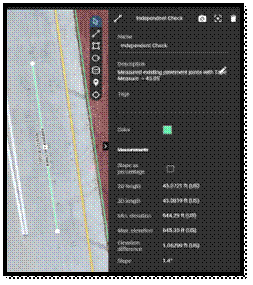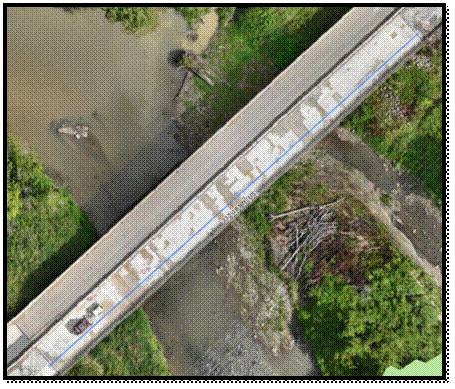3.10 DIARIES, RECORDS, AND MEASUREMENTS
3.11 MEASUREMENT OF PAY QUANTITIES AND RETENTION OF RECORDS
Sometimes the documentation of measurements and computation of actual work completed have been careless and incomplete. Noting measurements and making computations of pay quantities on scratch paper and transferring totals to the field book are not permitted.
Measurement of Pay Quantities and Digital Records Management
Measurements in the units prescribed in the specifications
shall be entered directly in the proper field book or digital project
management software.
Quantities for each contract item and all extra work must stand on their own merits in every case. Payment for legitimate work by means of increasing quantities on another item to equal the money is not permitted.
Specifications provide that some items, such as reinforcing steel and structural steel, are to be paid on the basis of design weights. Other items to be paid on a weight basis must be supported by scale tickets. Scale tickets are to be authenticated by an inspector or weighmaster at the point of weighing and again at the point of delivery at the job site by the project inspector. For small quantities 200 Mg or less/day (200 tons or less/day) of granular material delivered to the job site, minimum acceptable authentication may be initialing by the inspector of the scale ticket at the point of delivery.
Computation of areas, volumes, or lengths should be checked by a different inspector using the figures entered in the field book. All checks are to be initialed by the inspector making this verification or validated through automated software checks.
Supporting Documentation for Computation of Payments
When creating supporting documentation, below are minimum requirements to be included with the project records:
Information needed for all measurement methods –
· Project Number.
· Proposal Line No Item Code, and Division.
· Date the work was performed.
· Name of contractor/subcontractor performing the work.
· Location of the work, station numbers, right or left side, pier number.
· Measured quantity and Unit of Quantity.
· Name of the person doing the measurements.
· Name of the person that did the calculations.
· Name of the person that checked the calculations.
· Drawing/Map of area measured.
Information needed for mechanical measurements – (Measuring Wheel, Tape, etc.)
· Calculations made to arrive at the quantity (i.e., show your work or provide e-sheet, if applicable, that has formulas)
· Note: If information is first put into a paper field book, the field book needs to be with the project records.
Information needed for GPS measurements –
· GPS needs to be accurate within 0.1’; this does not include a Phone or Tablet without an external GPS device.
· ASCII comma delineated file of the coordinates
o Formatted as (Point Number, Northing, Easting, Elevation, Point Description, Feature Code).
· Coordinate system used.
Information needed for Unmanned Aircraft Systems (UAS)/(Drone) measurements-
· Name of Drone Pilot registered with the FAA
o https://amsrvs.registry.faa.gov/airmeninquiry/Main.aspx
· Name of Visual Observer, if applicable
· Drone Software used to create the model.
· Drones make and model.
· Raw data export Lidar Aerial Survey (LAS)
· Independent checkpoints
o Physical location on the ground with known measurement using other methods.
o Minimum one independent check per flight and Maximum of one every 3,000' per independent check
Questions about type of hardware/software used for payment supporting documentation can be directed to the RCE / E-Construction Program Administrator.

Mechanical measurements documentation - Example


GPS measurements documentation - Example


UAS (Drone) measurements documentation – Example 1 (Single Measurement)

UAS (Drone) measurements documentation – Example 2
(Multiple Measurements)


UAS/Drone measurements documentation – Example 2 (continued)
Retention of Records
Typically, project records are to be retained for three years after FHWA reimbursement on Federal-Aid projects and three years after final payment on non-Federal Aid projects. The required retention periods are minimums and may be increased at the direction of the District Construction Engineer (DCE).
At the time project files are disposed of by the project engineer, some project data may be determined to be of value in future years and selected for further retention, preferably in the area maintenance manager's file. Examples include correspondence on drainage problems, notice of pending litigation, or adjacent property owner concerns about the right‑of‑way.
After completing a project, paying the final estimate, and preparing the as‑built plans, assemble and file all project records relating to that project (including diaries, cross‑section notes, bridge and culvert inspection books, paving, grading, right‑of‑way, etc). The minimum retention period for project records is 3 years after project completion.
At the end of the retention period, some project records may be deemed important for further retention by the RCE. Data that may be of value includes field books containing notes on right of way survey, bench work and bench level surveys, drainage surveys, and some project diaries.